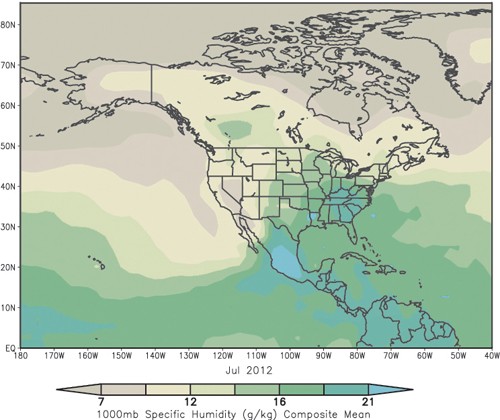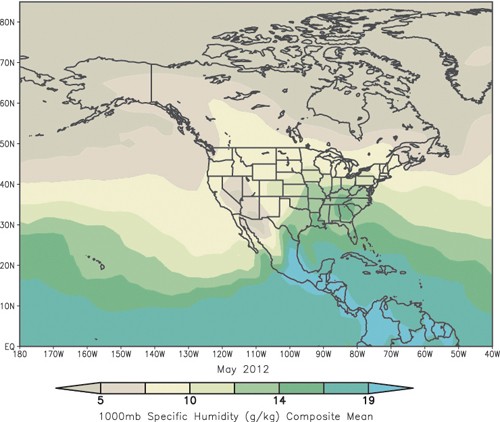On June 21, an observer would see:
a. long days and short nights in the Southern Hemisphere.
b. long days and short nights in the Northern Hemisphere.
c. day and night of equal length.
d. none of these
B
You might also like to view...
During the twentieth century, the Earth's atmospheric temperature increased by about ________ degree(s) Celsius
A) .3 B) 1 C) 2 D) 3
Which of the following is an anthropogenic source of acid deposition?
A) Sea spray B) Volcanic eruptions C) Extensive natural forest fires D) Gasoline engine emissions from automobiles
Observe these two maps of specific humidity, the top from July 2012, the bottom from May 2012. Which condition could account for the observed changes?

A. May strengthening of the Bermuda-Azores high advecting moisture to the High Plains from the Gulf of Mexico B. July strengthening of the Bermuda-Azores high advecting moisture to the High Plains from the Gulf of Mexico C. July strengthening of the Hawaiian high advecting moisture in a zonal pattern to the High Plains from the Pacific D. May strengthening of the Hawaiian high advecting moisture in a zonal pattern to the High Plains from the Pacific
The Vine-Matthews hypothesis explains the origin of
A. polar wandering B. continental drift C. mid-oceanic ridges D. seafloor magnetic anomalies